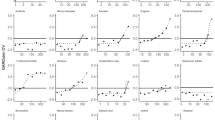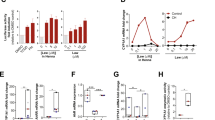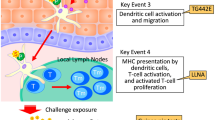Abstract
IN previous papers1–4 it has been shown that it is possible by a tetrazolium reduction method to estimate changes in the rate of formazan deposition in the epidermis of hairless mice after different skin irritants.
This is a preview of subscription content, access via your institution
Access options
Subscribe to this journal
Receive 51 print issues and online access
$199.00 per year
only $3.90 per issue
Buy this article
- Purchase on Springer Link
- Instant access to full article PDF
Prices may be subject to local taxes which are calculated during checkout
Similar content being viewed by others
References
Iversen, O. H., Acta Path. et Microbiol. Scand., 47, 216 (1959).
Iversen, O. H., Acta Path. et Microbiol. Scand., 50, 291 (1960).
Iversen, O. H., Acta Path. et Microbiol. Scand. (in the press).
Iversen, O. H., and Devik, F., Intern. J. Rad. Biol. (in the press).
Heidelberger, Ch., Ciba Foundation Symp. Carcinogenesis, London, 1959.
Author information
Authors and Affiliations
Rights and permissions
About this article
Cite this article
IVERSEN, O. An Early Test for Possible Skin Carcinogens. Nature 192, 273–274 (1961). https://doi.org/10.1038/192273b0
Issue Date:
DOI: https://doi.org/10.1038/192273b0
Comments
By submitting a comment you agree to abide by our Terms and Community Guidelines. If you find something abusive or that does not comply with our terms or guidelines please flag it as inappropriate.



